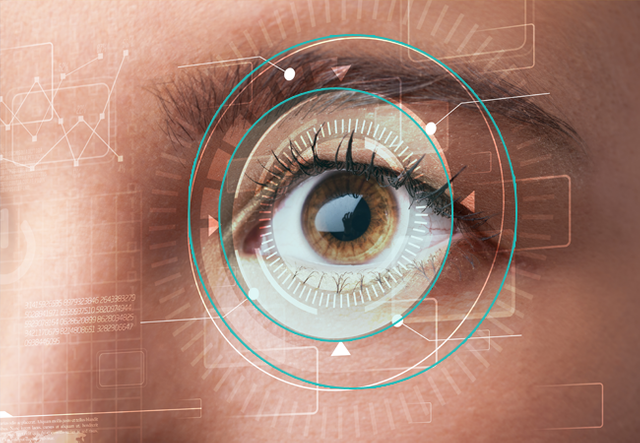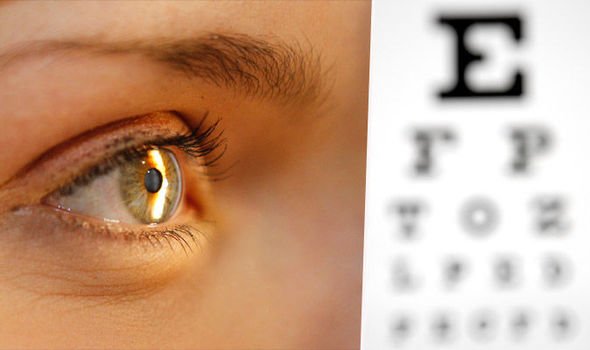How to preserve your eyesight
Our eyes are exposed to many risks

Throughout life, our eyes are exposed to dust, UV rays or even blue light. Too many attacks impose protecting them.
From birth to adulthood, our vision evolves. Sighted partially, when we first open our eyes, our visual acuteness increases to, 3/10 at about one year, 5/10 at 4 years and 10/10 at around 5 to 6 years. It is imperatively before this age that some visual disturbances have to be detected. Several hygiene and common sense measures are then necessary to maintain good eyesight, especially, after the age of 40, when different age-related ocular pathologies can occur...

To preserve the sight, it is obviously essential to protect the eyes. For example, we often forget wearing adapted glasses when working, tinkering or hiking in a dusty environment. But above all, we must beware of ultraviolet (UV) light. They penetrate in a more or less important and deeper way in the eye, and more easily in the child's eye, with bad consequences, from the simple inflammation of the cornea, or keratitis, to the melanoma of the eye, when cells containing the pigment that protects us from UV are reached.
However, as explained on its website the French ONG, Association Nationale pour l'Amélioration de la Vue – ASNAV (National Association for the Improvement of Sight), the sea and the mountains are not the only places where you have to protect yourself. The city can be as dangerous because "we are confronted with a strong reflection of the light on the windows, the white or smooth surfaces". In addition to that, summer is not the only season to dread. "The lights of autumn and winter, marked by a greater reverberation and more violent contrasts, expose as much as summer to the UV".

As soon as the UV index climbs, wearing glasses is essential, by opting for really filtering glasses, a pair of glasses with very tinted lenses will not necessarily protect against UV rays, whereas transparent corrective lenses can provide total protection".
Another source of light to be worried of : LEDs on television, smartphones, tablets and computers, whose blue light is likely to prematurely age the retina, according to a report from the French agency, Agence Nationale de la Sécurité Sanitaire de l’alimentation, de l’environnement et du travail – ANSES, (National Agency for Food Safety , environment and work). Spending hours in front of a screen can also cause eyestrain, which, if it does not trigger eye diseases, helps to reveal them. In this case, regardless of age, do not delay to consult a doctor.
Systematic medical consultation after the age of 40

For children, besides refractive problems that can be corrected, medical consultation can detect strabismus. As soon as this dysfunction is treated, it avoids deprive the eye vision partially or totally. For adult, even without a noticeable problem of the eyesight, after the age of 40, we must at all costs see a doctor. Many eye diseases are age-related, such as cataracts, glaucoma, or age-related macular degeneration (AMD), and it is important to treat it as suspected. It can also, as far as possible, prevent or delay their appearance with a healthy lifestyle.
In addition to age, it is known that tobacco, obesity, excessive sun exposure or deficiency of antioxidant nutrients are predisposing factors to the occurrence of so-called dry AMD, for which there is nowadays only a palliative treatments. Many reasons to avoid such risky behaviors. Similarly, a healthy lifestyle also prevents the development of glaucoma, a disease that is certainly inherited, but also linked to diabetes and hypertension. And diabetes is also known to induce irreversible damage to the retina; it is now the first cause of blindness acquired in Western countries.
Of course, diabetes is also under the influence of genes. But we know that overweight, obesity and lack of physical activity contribute to its development, at least in the type 2, which usually occurs after 40 years. However, 60% of people suffering from this diabetes have retinopathy in the twenty years following the onset of their disease. And about 2% end up becoming visually impaired, with a visual acuity less than 1/20. There is therefore a way to prevent these cases of blindness by fighting against obesity and sedentary lifestyle.
Whether it is diabetic retinopathy, cataracts, glaucoma or other causes of blindness, prevention is the watchword of the World Health Organization (WHO). According to its data, 285 million people are visually impaired and 39 million are blind. According to its conclusions, 80% of these deficiencies could be prevented or cured.
Thanks for sharing this information.
You're welcome.